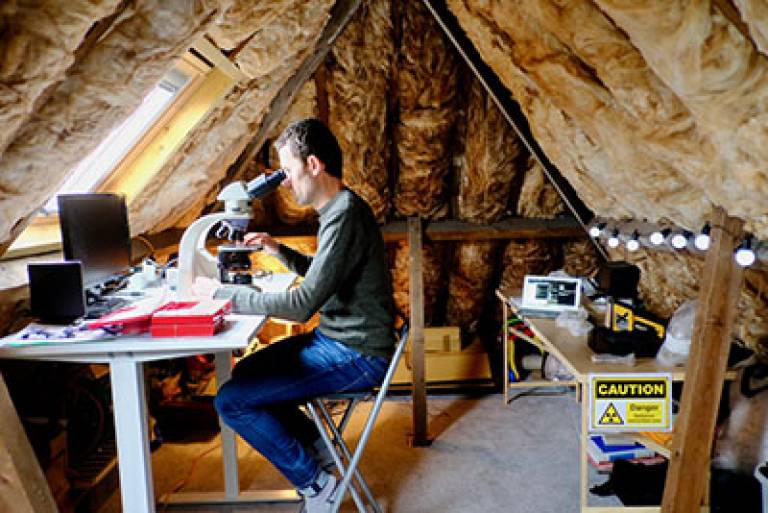Remote working update: Patrick Quinn
24 March 2020
The UCL Institute of Archaeology building may be closed but research and teaching activities continue remotely! Here is an update from Patrick Quinn, Principal Research Fellow in Ceramic Petrography.

Patrick recently sent the following update on his remote working - from his room with a (sea) view!
“I am set up in my new attic office at home in Hythe, Kent. I have brought home a microscope and one of our portable X-ray fluorescence spectrometers. This means that the Wolfson Labs will not be entirely inactive during the closure. I also brought back students' dissertation samples, which I will analyse geochemically for them. I will email them their data, which they can process and interpret via SPSS on Desktop@UCL. This will mean that several analytical dissertations on ceramics can still go ahead, albeit in a slightly limited way. Some data is better than none at all! There is the possibility that other students and supervisors can post me samples for analysis and I can send them data back."

Patrick Quinn is a leading expert in the field of ceramic analysis, particularly thin section petrographic analysis. He has over 20 years of experience developing and undertaking research projects on ancient pottery and other ceramics from different archaeological periods and geographical regions, including studies of ceramic production and distribution patterns in prehistoric Greece as well as migration and cultural interaction in pre-contact North America.
Patrick is currently also undertaking research into the Terracotta Army potters as well as analyses of ceramics from the Must Farm Archaeology project. His book on ceramic petrography is essential literature for students of archaeological ceramics.
The Institute's Wolfson Archaeological Science Laboratories are unparalleled in science-based archaeology within the UK and Europe with excellent facilities for the examination and analysis of a wide variety of archaeological materials.
 Close
Close

